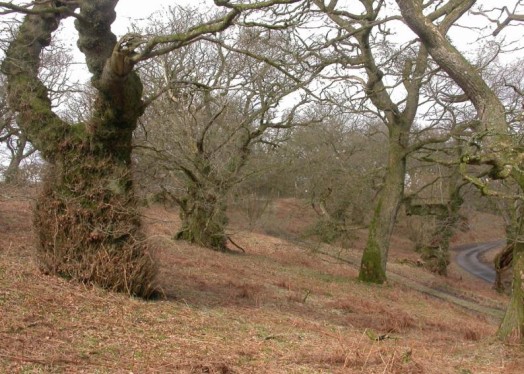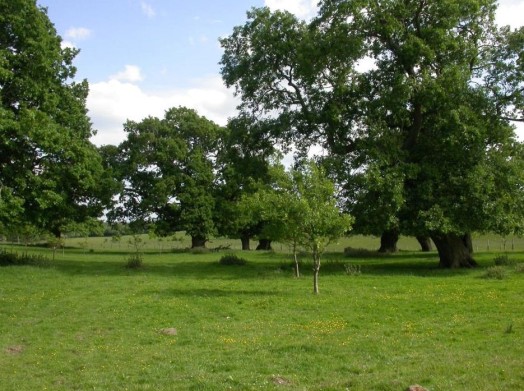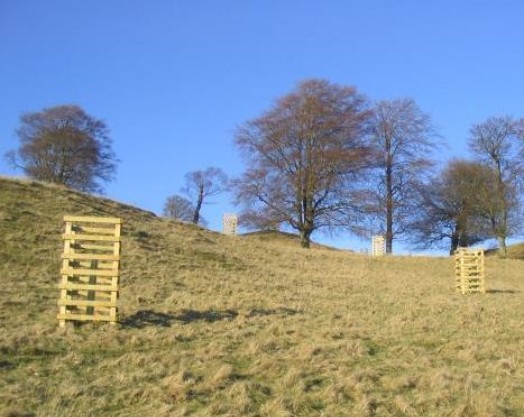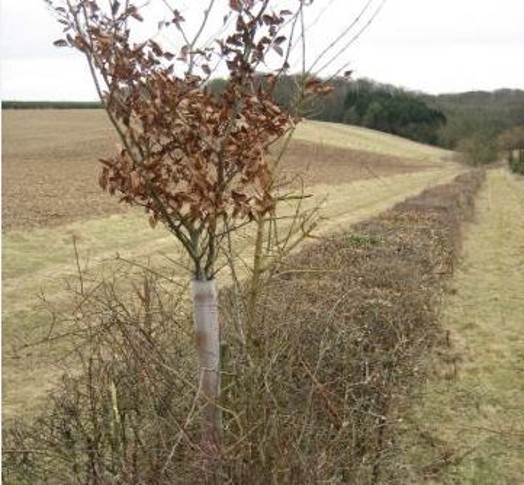Supporting guidance for Replacement or Planting of Individual Trees within Ancient Wood Pasture or Hedgerows
Date published: 30 March, 2015
Note: In September 2023, references to Scottish Natural Heritage have been updated to NatureScot.
This option supports the planting of individual trees within ancient wood pastures or hedgerows, where trees within hedgerows form part of the local landscape. Planting new standard or half-standard trees to become big open-grown mature trees, especially native ones like oak, ash and beech, will increase the amount of wildlife tremendously.
Insects congregate around the tree crown and beneath the canopy, providing rich feeding for birds and bats. Small trees, like holly, rowan and crab apple, are also very valuable, especially for their flowers and rich berry and fruit crops.
Open-grown trees can be rich reservoirs of biodiversity and cultural icons, and in the UK we are lucky that there are so many in our landscape.
However, the disappearance of wood pastures and parkland since the 1800s, and the removal of hedgerows have led to significant losses of these open-grown trees. There appears to be a growing imbalance between the loss of mature and ancient, open-grown trees and the regeneration of new trees to replace them.

Lowland oak wood pasture – © Kate Holl, NatureScot
This guidance highlights some of the most important factors to take into account when planting replacement trees that are to become the open-grown trees of the future.
Where should I plant replacement trees?
In an ancient wood pasture, plan your planting to allow plenty of space between trees and sufficient space for the tree itself. Maintain a tree-free zone around existing open grown trees, or they will be damaged by shading from the more vigorous younger tree, and the shape of the younger tree itself will be affected as it grows.
The amount of space required by a tree or shrub to grow to its full crown potential depends on the species (and genetics) and also on its situation. As a minimum, we recommend you plant replacement trees in an area with a radius equal to the height of the mature tree. For example, a Scots pine has a top height of 40 metres and is very light demanding, so plant at 40 metre centres.
In open habitats such as grasslands, both shade tolerant and light-demanding trees can establish, but as shade-tolerant trees may be more vulnerable to drought they may not do well in the open where moisture levels may fluctuate more widely. Consult the table below and select species appropriate to the site conditions.
| Tree | Tree shade tolerance (%) | Approx height (metres) |
| Scots pine | 33 | 40 |
| Common hawthorn | 39 | 15 |
| Silver birch | 41 | 30 |
| Pedunculate oak | 49 | 38 |
| Ash | 53 | 30 |
| Alder | 54 | 28 |
| Rowan | 55 | 25 |
| Sessile oak | 55 | 42 |
| Sweet chestnut | 63 | 36 |
| Field maple | 64 | 25 |
| Sycamore | 75 | 38 |
| Holly | 77 | 23 |
| Hornbeam | 79 | 30 |
| Small-leaved lime | 84 | 42 |
| Yew | 89 | 25 |
| Beech | 91 | 40 |
Comparison of light requirements of common trees and height of tallest specimen in UK
Allow space for future planting in decades and centuries to come, so that a wide range of tree ages can develop. As oaks can live for 900 years there has to be plenty of space in which future generations can be established. In general, aim to allow 30 to 40 metres between trees and the same distance from existing trees, so that your final tree density does not exceed 40 trees per hectare.
It might seem appropriate to establish the potential successors of open grown trees at a higher density to allow for some failures. It is, however, generally advisable to adopt the final intended spacing between newly established trees so that they are open grown in character from the earliest stages and they do not run the risk of losing this character because of a failure to maintain a suitable thinning programme. If any tree fails to thrive, it can be replaced as necessary.
Always remember that trees and shrubs grow best when root growth is good and competition for moisture and nutrients from other plants is low. Weed young trees during the first few years of their lives – note that the use of herbicides to control weeds is not allowed under this option.
Inorganic fertilisers negatively affect mycorrizhal fungi and should not be used during tree establishment or maintenance.
Which species should I plant?
Plant native species only. A list of trees and shrubs considered to be native in different parts of Scotland is provided in the Scottish Forestry's Guidance on Seed Sources for Planting Native Trees and Shrubs in Scotland.
Under certain circumstances approval may be given to plant non-native trees to reduce the age-gap in tree populations. For example, sweet chestnut grows faster than oak and has similar heartwood and therefore some native species associated with oak may find sweet chestnut a suitable alternate host.

Replacement planting of young oaks in lowland oak wood pasture – © Kate Holl, NatureScot
When establishing individual trees in hedge gaps you can plant native species and also beech and sycamore. A list of native hedgerow species is available on the NatureScot website. You may plant beech and sycamore where they are traditionally used in your local hedges. Use plants raised in your local area wherever possible.
Planting guidance
Trees must be at least half-standard, or standard with a clear stem height of at least 1.2 metres before the canopy starts.
Protect trees from damage by herbivores.
For ancient wood pasture trees this protection must be wooden post-and-rail fencing or metal tree guards.
For hedgerow trees, this protection must be by either a tube or stake, with a tube of at least 1.2 metres high, or a post, strut, spacer and tree tie, and in most cases this will require the use of an appropriate tree stake and guard. The stake should penetrate the ground to a depth of at least 30 centimetres, be below the lip of the tree-shelter but 10 centimetres above the upper tie.
Ties should not encircle the tree to allow their later removal.

Replacing wood pasture with young trees protected by post and rail fencing – © The Borders Forest Trust

Hedgerow tree with appropriate protection from herbivores – © NatureScot
The top of the tree shelter should be rounded or folded to reduce the risk of damage to the emerging tree. Push the tree shelter into the ground to protect the tree from damage by voles. The length of tree shelter required is dependent upon the type of browsing that is likely to occur.
Any tree which fails to establish will need to be replaced.
